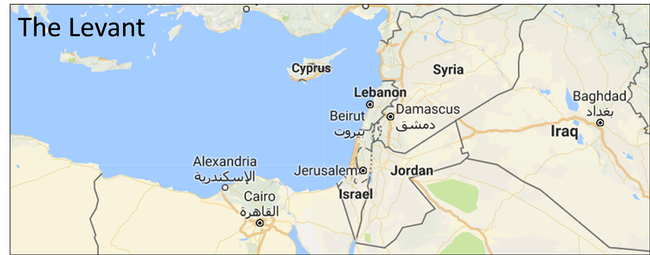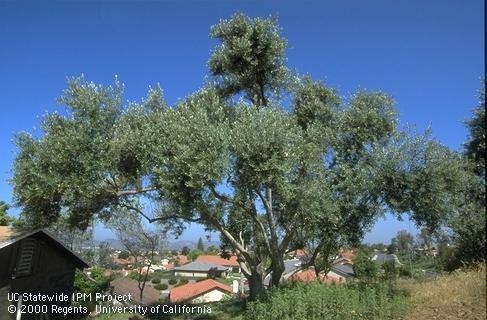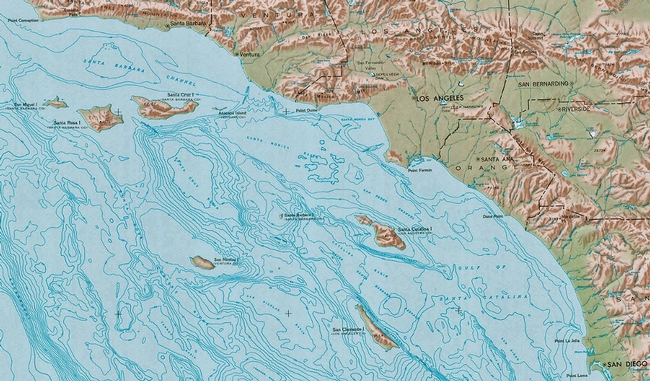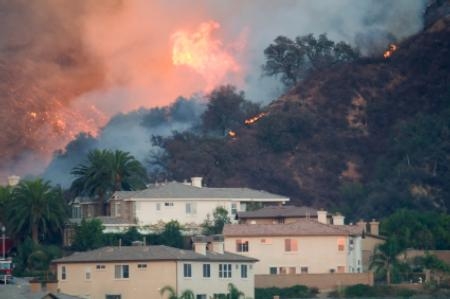
Posts Tagged: Spanish
California Olives and the Mystery of Santa Cruz Island
Recent advances in understanding the history of olive domestication
Elizabeth Fichtner, Farm Advisor, UCCE Tulare and Kings Counties
 Olives are thought to have first been domesticated in the northeastern Levant, an area near the border of present-day Turkey and Syria. Map captured from Google Maps. |
With the emergence of the California olive oil industry, the state has witnessed a dramatic diversification in the olive cultivars grown commercially. Our mainstay black ripe olive industry, dominated by the ‘Manzanillo' olive, is now combined with increasing acreage of Spanish, Greek, and Italian cultivars used to create high quality, extra virgin oil. The historic table olive industry of California still represents around 18,000 acres of olives in the state, while approximately 40,000 acres are currently devoted to oil production.
Although olive cultivation in California is relatively new (dating back to the historic Spanish Missions established by Franciscan priests), olives are of key importance in the history and culture of the Mediterranean basin. A recent publication by a group of European, American, and North African scientists has re-evaluated the location of the domestication of the olive, providing genetic evidence that domestication occurred in the northeastern Levant, close to the present-day border of Syria and Turkey.
To complete the study, researchers collected plant material from nearly 2000 trees, sampling both wild oleaster populations and domesticated cultivars of olive. World Olive Germplasm Banks in Córdoba (Spain) and Marrakech (Morocco) served as sources of the majority of cultivars included in the study. Researchers utilized the genetic sequences of plastids (ie. chloroplasts) to discern differences between cultivars and wild oleaster populations. Plastids are organelles (structures inside cells) that contain their own DNA. Since plastids are generally inherited from one parent (similar to mitochondria), their genetic sequences are more conserved then that of nuclear DNA, which is contributed by both parents. Since olive is a wind-pollinated crop, nuclear DNA may be disseminated over large distances.
The genetic analysis of wild populations indicates three distinct lineages of olive: the Near East (including Cyprus), the Agean area, and the Straight of Gibralter. These three wild populations are likely linked to refuge areas where populations persisted through historic glaciation events. Interestingly, the geographic distribution of these three populations also corresponds to the subdivisions of the olive fruit fly, suggesting that these regions offered shared refuge habitat for both the host and the pest. The wild oleaster population in the eastern Mediterranean was found to be more diverse than previously thought and ninety percent of the present-day cultivars analyzed in the study matched this group. Common olive cultivars grown in California, including, Sevillano, Arbosana, Arbequina, and Koroneiki, all belong to this group originating in the eastern Mediterranean.
As a result of this study, it is proposed that the initial domestication of olive took place in the northeastern Levant; subsequently, plant material was disseminated to the whole Levant and Cyprus before being spread to the western Mediterranean. After these initial domesticated trees spread throughout the Mediterranean basin, they likely underwent subsequent domestication events by crossing with wild oleasters, thus introducing genetic material from the other two ancient western Mediterranean lineages.
Such studies may appear purely academic; however, they can also address more timely questions and assist in characterizing cultivars. For example, a 2010 study in California made genotypic comparisons between historic olive plantings in Santa Barbara, CA and at Santa Cruz Island, CA. The study elucidated that the olives on Santa Cruz Island, planted in the late 19th century are different than other historic olive plantings in Santa Barbara, CA. Olives planted at the Santa Barbara Mission in the late 18th century are the ‘Mission' cultivar, whereas those on Santa Cruz Island (Figure 3) are generally ‘Redding Picholine.' Interestingly, the olives on Santa Cruz Island are thought to have been planted for oil production, but there are no historic reports of harvest or sale of a crop. Additionally, the Santa Cruz Island olives have become somewhat invasive on the island due to their propensity to establish from seed. As a result of genotypic analysis of these populations and the fact that ‘Picholine' makes an excellent rootstock due to its ease of propagation from seed, it is hypothesized that the ‘Picholine' variety was intended as a rootstock, but the grafts never took. Consequently, maturation of a ‘Picholine' orchard may have just been an accident, a mistake, or simply bad luck. The completion of this local population genetics study may have helped explain the unsolved mystery of the historically unharvested trees on Santa Cruz Island.
Find Santa Cruz Island.
Besnard, G., Khadari, B., Navascués, M., Fernández-Mazuecos, El Bakkali, A., Arrigo, N., Baali-Cherif, D., Brunini-Bronzini de Caraffa, V., Santoni, S., Vargas, P., Savolainen, V. 2013. The complex history of the olive tree: from Late Quaternary diversification of Mediterranean lineages to primary domestication in the northern Levant. Proc R Soc B. 280: 20122833.
Soleri, D., Koehmstedt, A., Aradhya, M.K., Polito, V., Pinney, K. 2010. Comparing the historic olive trees (Olea europaea L.) of Santa Cruz Island with contemporaneous trees in the Santa Barbara, CA area: a case study of diversity and structure in an introduced agricultural species conserved in situ. Genet Resour Crop Evol 57:973-984.

olive tree
Irrigation Management in Spanish for Avocados and Citrus
A microirrigaiton workshop on use and maintainence of systems in Spanish is being held on three successive dates in San Luis Obispo, Ventura and Fallbrook. These are the same workshop held on July 23, 24 and 25 in the respective areas. The workshops are intended for Spanish speaking workers who maintain and use microirrigation systems. The classes are free and no registration is required. These and future workshops are funded by USDA. For more information contact Lesa Scarborough at:
administration@californiaavocadosociety.org
951-225-9102 Office
951-225-9198 FAX
Click on the flyer below for more details
Irrigation flyer
UC’s Spanish News and Information Service wesite
UC ANR’s Spanish News Service website brings Agriculture and Natural Resource information to California residents who are fluent, and more comfortable learning, in Spanish. This is a vital service for all Californians as many of the issues and challenges we face together can only be solved by all of us working together.
This highly organized, visually appealing, and easy to navigate site provides a great deal of information on many important topics. The information can be accessed by audio, video, articles, and blogs.
Topics include:
- Invasive species
- Water quality
- Nutrition and fitness
- Child development
- Preventing obesity and overweight
- Reducing the risk of diabetes
- Natural resources
- Recovering from a natural disaster
- Integrated Pest Management (IPM)
- Preventing and recovering from wildfires
- Money management
- Gardening
- And much more
A similar site is available in English.
Water. Rest. Shade.
Cal/OSHA’s 2012 Heat Illness Prevention Campaign provides multiple approaches to protect outdoor workers from heat illness. The campaign is a combination of education, outreach and enforcement efforts.
Education resources for employees are available in English, Spanish, Hmong, Punjabi and Mixteco. These free resources include DVD that features workers from agriculture, construction and landscaping occupations.
Employers can also find resources to help minimize heat illness.
In addition to the online resources, Cal/OSHA will be providing free, one-day programs designed for educators and leaders from community organizations who can help reach workers at risk for heat illness. These “Train-the-Trainer” programs will be held throughout the state, with a class in Ventura on June 15. To learn more about the training program please see the following links in English and Spanish.
Natural resource funding opportunities
The Natural Resources Conservation Service (NRCS) provides many resources for public use. In addition to educational resources, the NRCS has some financial assistance programs available to help eligible landowners and agricultural producers plan and implement conservation practices.
These programs address natural resource concerns and include: saving energy; improving soil, water, plant, air, animal and related resources.
Specific programs include:
- Agricultural management assistance
- Agricultural water enhancement program
- Air quality initiative
- Cooperative conservation partnership initiative
- Conservation innovation grants
- Conservation stewardship program
- Environmental quality incentives program
- Emergency watershed protection program
- Wildlife habitat incentive program
Additional information can be found on the NRCS website, or by contacting your local NRCS office. Program information is also available in Spanish.




